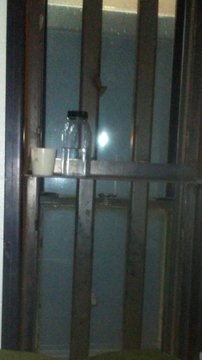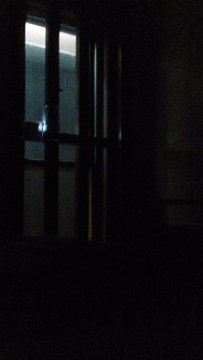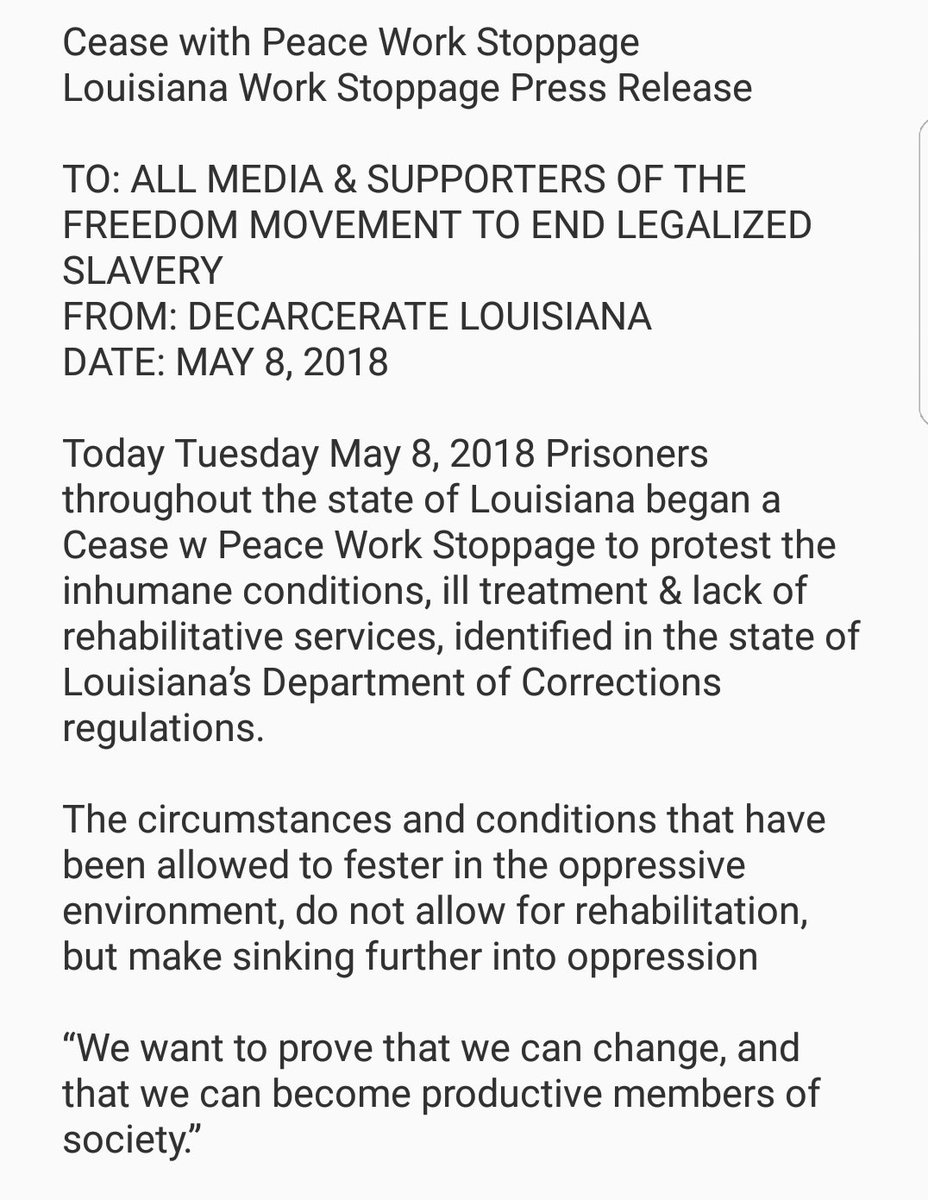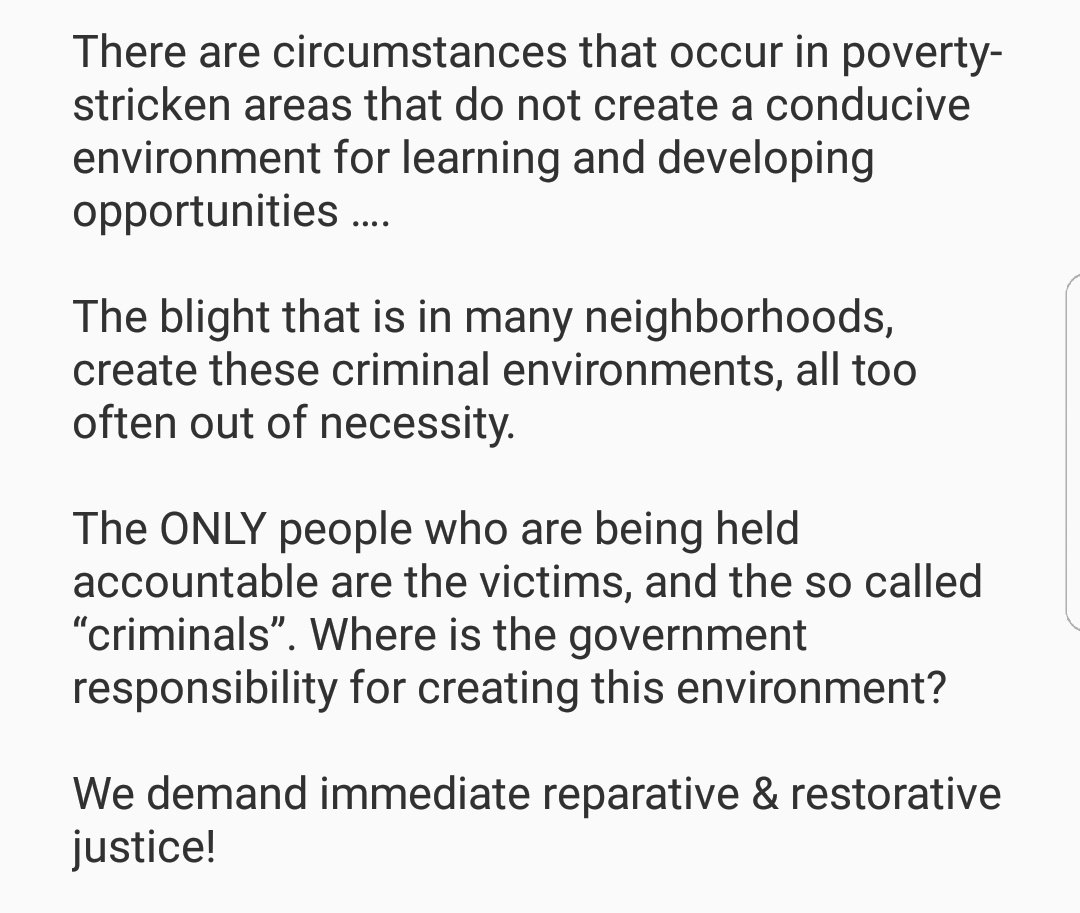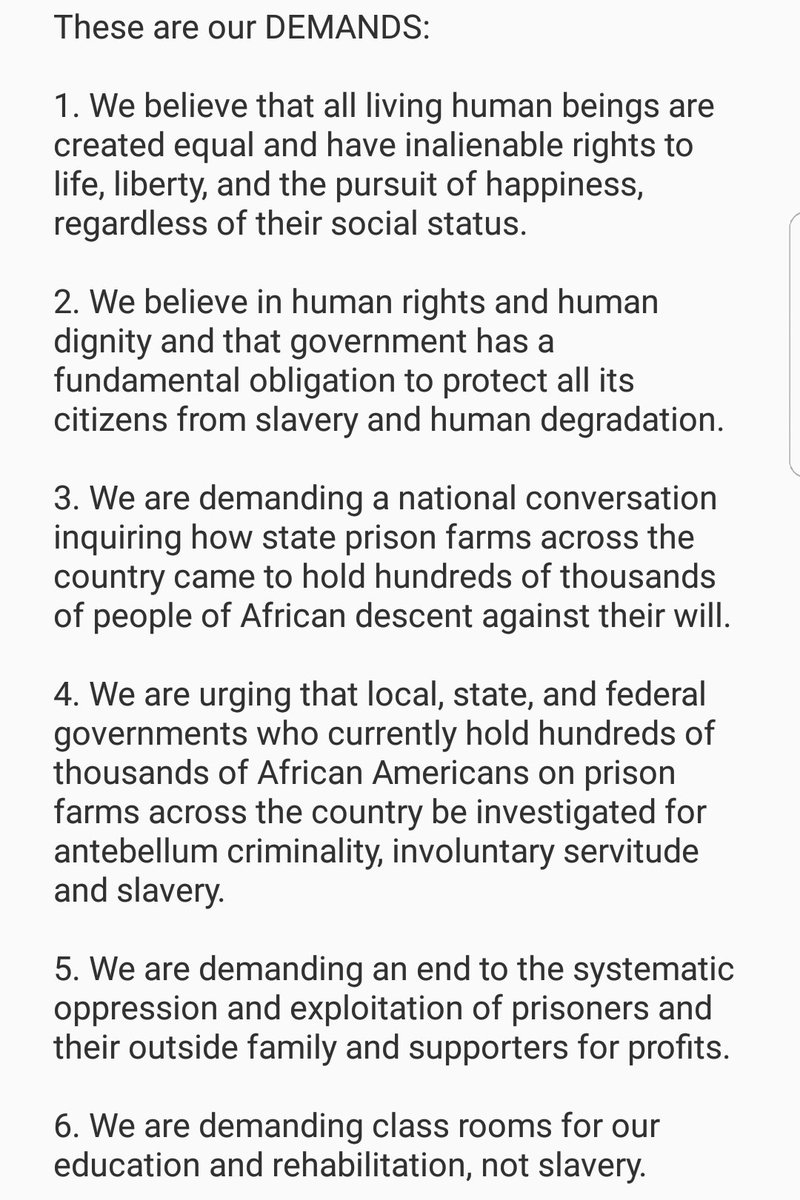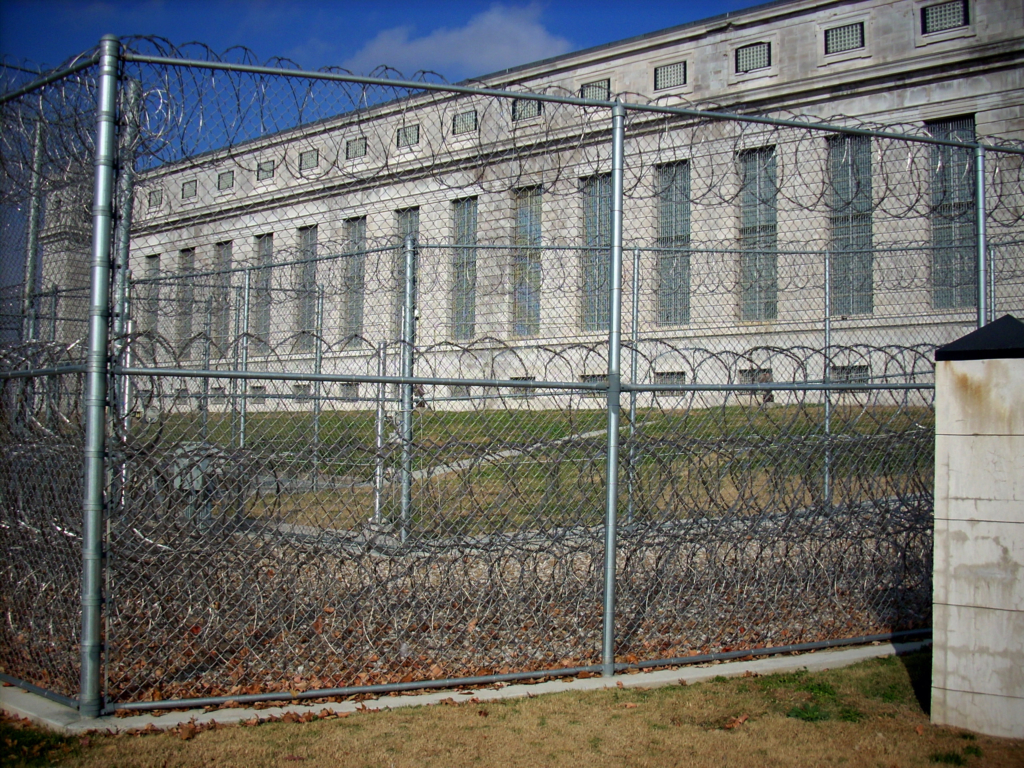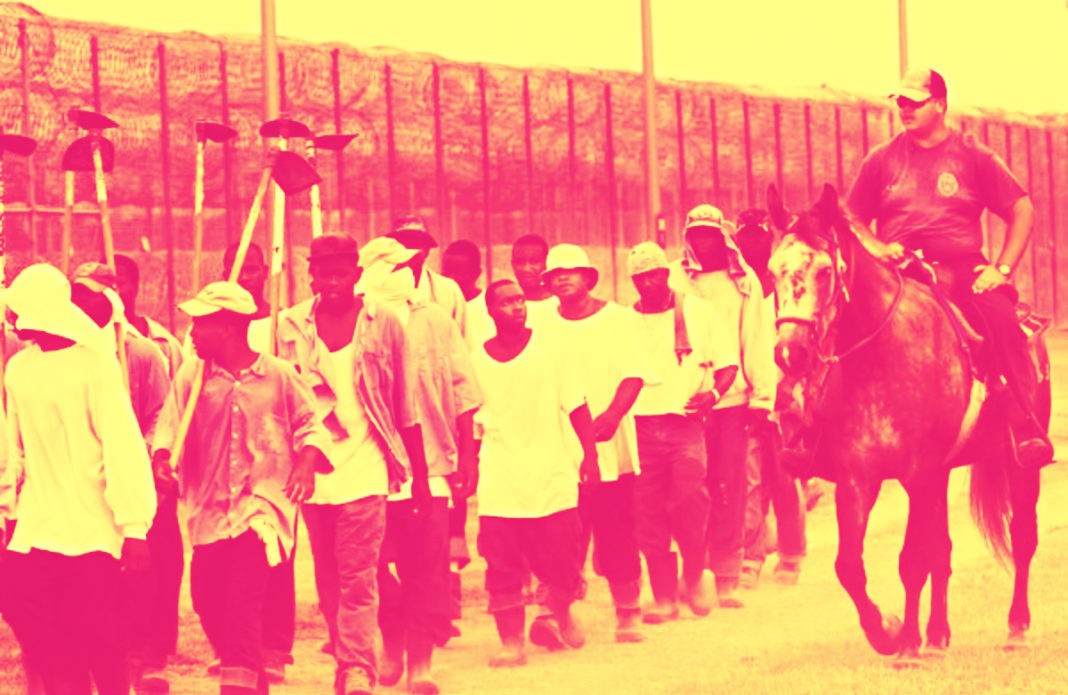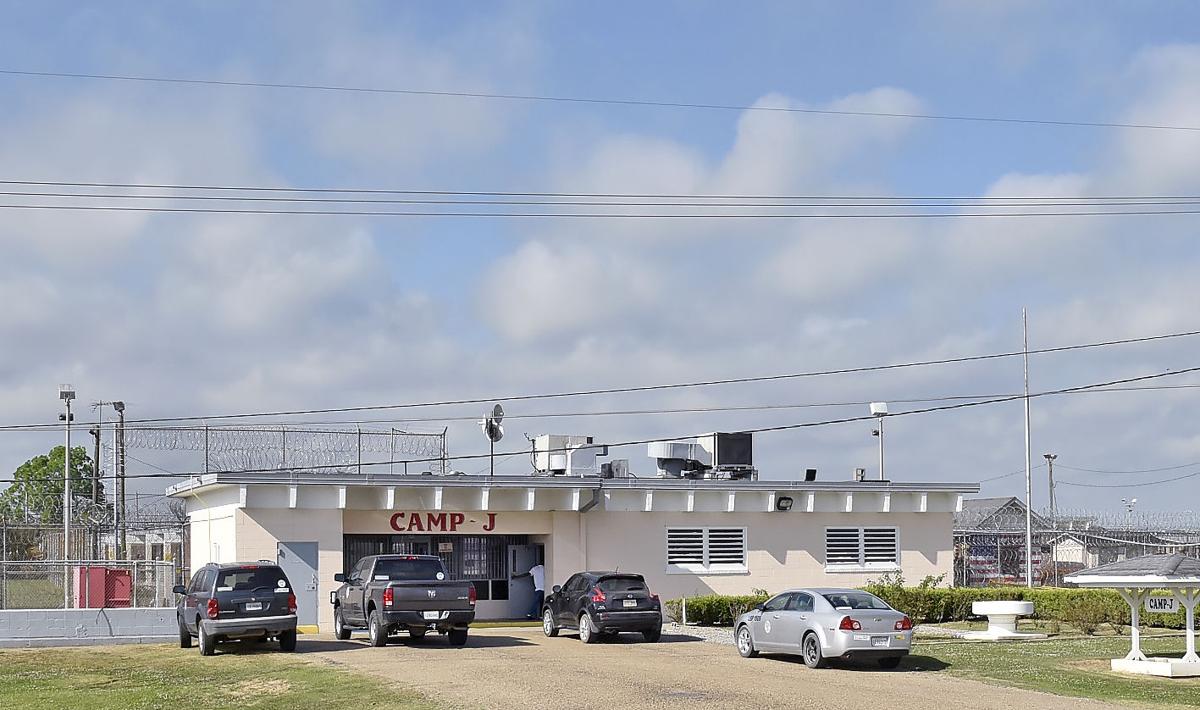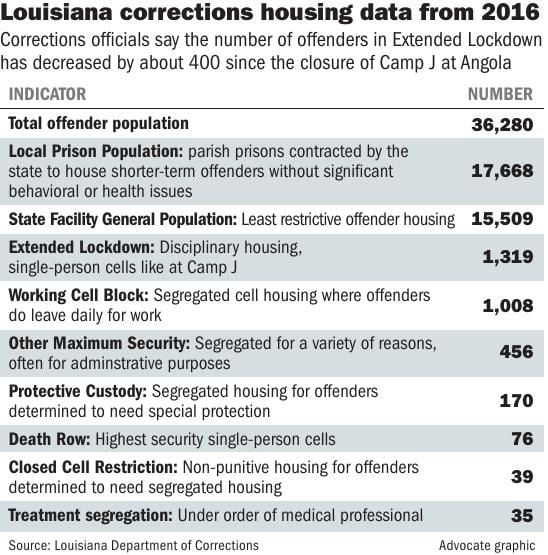South Carolina Prisoners Reflect on Causes of Violence in Prisons and Solutions, Part Two
by Jared WareJared Ware
about 2 hours ago
The deadliest incident of violence in a United States prison in a quarter century took place at the Lee Correctional Institution in South Carolina on April 15, 2018.
According to multiple reports, including SCDC Director Bryan Stirling’s own, prison guards and EMTs made no attempt to break things up or lend medical aid from moment the fight commenced until hours after it was over, while imprisoned people were beaten and stabbed to death. Seven people were killed and dozens were injured, with at least twenty two requiring hospitalization.
On April 22, I interviewed three individuals from various prisons inside the South Carolina Department of Corrections. One of the prisoners identified himself as a member of Jailhouse Lawyers Speak, a group of imprisoned human rights advocates that has made national calls to action for a prisoner-led strike in response to the conditions they feel are truly responsible for the violence and hopelessness within prisons across the United States. The strike is expected to begin on August 21st, 2018.
Throughout our conversation, these three individuals, who are identified only as D, S, and E to protect their identities and prevent retaliation by prison officials, highlight the impacts of policies pushed by President Bill Clinton’s administration and implemented by states across the country. They also point to the dehumanization of prisoners and challenge our conception of “gangs,” which does not take into account the ways in which incarcerated people are forced to create their own collective means for safety, survival, and camaraderie in a situation where hope is the scarcest commodity.
They also urge the public to reconsider the nature and source of violence within prisons and the absence of human dignity and a rehabilitative environment within our nation’s prisons. They present actionable solutions to mitigate some of the harm caused by prisons on our ultimate path toward shedding carceral responses to legitimate societal needs.
As I write this introduction on May 2nd, 2018, South Carolina prisoners have confirmed that all Level 2 and 3 facilities have remained on a statewide lockdown since April 15th. This means people imprisoned in facilities have been denied any freedom of movement, regular access to showers, recreation, or meals outside the confines of their cells.
We grant permission for individuals and news organizations to republish this interview in its entirety for their audiences. It is imperative that we deepen conversations around the causes of violence in prisons and the real impacts of incarceration on all people, inside and outside the walls.
Editor’s note: this transcript has been lightly edited for clarity
—
Part Two of Interview
Part One: South Carolina Prisoners Reflect on Causes of Violence in Prisons and Solutions
D: If I can, I wanted to kind of backtrack on the question you asked earlier on cell phones.
Jared: Sure.
D: First things first, I always have to understand the basic fundamental nature of today’s prison system throughout this nation is slavery. We understand that it’s based on the 13th Amendment of the United States Constitution, we can’t get around that. There’s a profit business, so it’s all about profit, it’s about the profit margin. That’s what fuels the numbers in the prisons across this nation. It’s no different in the state of South Carolina.
Technology, with prisoners having access to communication, the phone business has lost billions literally, in this state right here alone. Billions! They have put in certain rooms in here, they’ve put these machines in called kiosks, they are getting no play. This is where you’re supposed to be able to send out literally something like text messages to your people. They thought this was going to be a booming industry, nobody is using it. This is a loss of revenue.
We have these same phone companies that are investing in the department of corrections, literally for free, giving them equipment to find cell phones. Giving them equipment to search our families at the front gate when they come in to visit us, giving them equipment to monitor the gate areas. So they’re giving them this. This wasn’t just a free handout, but this was because [they] need to make money, [they] need to get these phones out of the system. That has always been understood.
Even now, I’m hearing that, even with the jamming equipment that Bryan Stirling is requesting and supposed to have a hold of for Lee County right now, I think the company is called “Tech something,” I’m not really sure exactly, but my understanding is that the parent company is GTL.
Jared: I heard that rumor as well.
D: So, I have to do my research on that, [but] this is definitely what I’m hearing. This is all about business, this is all about money. The minute they can wipe out, it’s like using one stone to kill two birds at the same time. You kill that communication gap, that gap where they’ve been reporting on, because most of the time, when they come out with a lot of frivolous things, it’s immediately refuted by us, by some pictures or some videos or something. Saying, “No, this is what happened.” This is unusual. This is something that’s very revolutionary, [a] very new generation in the prison system. They are not used to that; they had all communications with media locked down.
SCCondemnVoices
@SCconvict9999
ATTENTION SOUTH CAROLINA RESIDENTS:
'The degree of civilization of a society can be judged by
entering its prisons.'
South Carolina department of corrections Crisis really is an important issue and needs to be address. If you're concerned abt SC demand accountability. #scnews
7:14 AM - Nov 13, 2017
Jared: Absolutely. So let’s pivot a little bit because there’s a lot of talk right now about violence. So there’s a couple of questions I wanted to ask related to that. One is, what do you all see as the source of violence within prisons? And then the other one is about gangs and this idea – because I think that people don’t really think about this very thoroughly – about why someone might join a gang in prison and why they might be even more likely to join one in prison versus when they’re out on the outside?
E: I would have to say dealing with the gangs… Well, I’m going to start first with what the brother asked about what stimulates the violence. Me personally, I feel that the violence is stimulated by the overt oppressive nature of the beast and what they’re doing. Like y’all already had mentioned, they’re constantly taking [things] away and keeping us confined to a box. And you take three or four different tribes, who normally may get along, or see eye-to-eye on a business level or whatever the terms may be, but you put them in a box and you don’t separate them or give them anything to be… So you may know that this area may be predominantly this culture, or that area may be predominantly that culture, but I’m going to take them all and mix them up, just so I can make it confusing. Because to me, it seems like they stir the violence up because that’s the type of media they need to put their spin on things.
Then it goes back to the [cell phones], and we come and tell the truth on the fact and that’s a problem for them, because they’re going to say [the violence] is because of a cell phone, or it’s because of this and that. They’re not going to sit there and tell you it’s because [they] keep oppressing us, and taking away from us, and not giving us any outlets to do and be about positive things.
Nowadays, you got the tribes or the “gangs” as some may say, coming up with positive ideas to do and bring together and unify, despite what the police or the officers are doing. They’re steady trying to take away all our hope, but we still got brothers and organizations coming together, still trying to rectify unity on a level where we don’t even have nothing to look forward to. So you can only imagine how discouraging it gets when it’s like we’re striving to do so much better and so much greater but we’re still getting a foot on our neck. Me personally, that can ignite [drama] any time, any place, on the street, in the penitentiary, wherever.
So I have to say, it’s incited by them, themselves. I feel like they feel like, if enough violence goes on, they can put their spin on it and they can basically – like my comrade said – bring lock-up to the yard. They keep us locked down for nothing. Every little thing, they blame it on [staff shortages]. They don’t give us showers, they blame it on [staff shortages].
If an incident goes on, there’s no officers there to protect anybody. That’s another thing about the gangs. Nowadays, you don’t know, these young brothers might need protection. They can’t look at the officers and say these officers are going to protect me and keep me safe. It ain’t no such thing as that. You gotta fend for yourself back here. So I look at that, that’s another reason why people are joining these gangs like that. Not everyone, but you can only imagine, you’ve got kids coming back here 16, 17, have nobody. You’re throwing them in here with [prisoners] in a maximum security prison with a 100 year [sentences]. You’re going to have to have somebody or some type of way to get around. Or some people just lose hope and just fall by the wayside, and just do whatever they’ve got to do to get through, but you got some people that try. And to me, it’s like sometimes the gangs [are] a better outlet for them, because then they don’t have to worry about people taking advantage of them.
Because like I said, it’s fend for yourself back here. It ain’t like it used to be where you had enough officers and stuff. [Back then], something might pop off, it might go down, and it gets broken up and under control. Nah, now the officers are running the opposite way.
You might try to escape from being hurt, they’ll lock you on the wings and cause your death. That’s exactly why they’re trying to take these phones because we’re the ones who are putting that out there and letting people know this is what they’re doing. This man life could’ve been saved, but the officers didn’t do their job.
S: People aren’t born criminals. They are criminalized by the environments they are socialized within. United States Constitution’s 13th Amendment is proof alone that the mass amount of the warehousing of prisoners is not by accident. And even prisoners convicted of violent crime or who may be involved in violent activities, they may one day return to society still. People’s cases can be overturned, some of these guys got max-out dates, some may make parole. So wouldn’t it be wise for them to be implementing programs that would better the prisoners, not make them worse? They should want to heal anything that they consider to be sick or whatever.
Society itself promotes and produces violence. People ain’t getting like that in prison, they’re already like that out there. Television, movies, video games, comic books, novels, cartoons alone. They are indoctrinating this psychological behavior. They’re doing that out there in society.
Like the brother said, some of these guys that are locked up in here are juveniles. That’s a learned behavior, they weren’t born violent. And in regards to the survival thing, we create our own means of survival, because the state don’t provide us with adequate supplies of anything. They give us one roll of tissue a week. One roll a week, that’s it. It’s 15-18 hours between meals in here sometimes. That’s just reality.
Only prison industries workers get paid for working. Everybody else’s work is free labor. But we’re looking at these other prisoners going to work, knowing that they’re getting a paycheck, they even file taxes. They can pay child support and provide for their families on it. All prisoners should get paid for all work, not just prison industries.
They’re making millions of dollars off federal prisoners and state prisoners across the country through prison industries. That’s facts.
D: Very true. Most prisoners, when they come to prison, come with the mindset that they want to get themselves together, and I think a lot of people miss that right there. Even the ones that are labeled violent–and when I hear people say “violent,” we have to be careful with that term. Because a lot of times people are using this term “violent,” and we’re seeing politicians saying “well, we’re not going to be supporting violent offenders.” It’s a new theme now, where we just promote policies [that benefit] non-violent offenders. And that kind of sickens me because, at the end of the day, who determines what’s violent? Who determines what’s a violent offender? To me, that’s a bunch of people making up these laws, and they determine what’s violent and what is not. And a lot of times people have non-violent offenses and these are straight up violent offenses in my eyes. You know, so I’m very careful with that term non-violent versus violent offenders.
The people that they want to categorize and label as violent offenders for the most part, these brothers and the women that come into prison, they come in with the mindset that they want to do the right thing. I think the minute they enter through those gates, and the minute they begin to observe their surroundings, they begin to recognize immediately, that any change they wanted to do, they don’t need to do it, because they’re going to be perceived a certain way and they’re going to be handled a certain way, you know, and it’s going to be a lose-lose situation for them. And people have to really understand that humans are entering through these gates and becoming prisoners, and in the process of that, the environment back here is making it worse. It is creating something in these prisoners that is a lot worse than when they came in for a lot of these guys and women.
Because, once again, they may have done some terrible things out there, but for the most part, when they start going through and they recognize the days ahead of them, they want to change, they want to do something different. Hell, I know I was about that when I came in here until I went through the reception and evaluation center, and saw it wasn’t going to work out that way.
That is another reason why some people want to group up. Some people want family back here as well. I like to call them street formations [as opposed to using the term gang]. A lot of times, people need someone that can look out and care for their best interests, too. Not just in the protection role, but also somebody that gives a damn, because the system is so cold. So when you’re sitting back here, and you’re drinking, you’re smoking, you’re dabbing, you’re talking about your loved ones with your homeboy there, that’s a different feeling versus when you can get outside that cell and you’re looking at the prison itself, and the environment itself, which is a cold place.
So everybody looks for some sense of comfort, some sense of love, which is another reason I think the prison system eliminating our contacts, our family ties, is really detrimental to prisoners re-entering society successfully, but that’s another subject.
S: Let me do a quick rebuttal on what he said on the non-violent versus violent offenders because I like what he said. Out there in society, when they’re talking about what people are incarcerated for–like if somebody is convicted for murder–that’s considered to be a violent offense. But that could’ve been a first-time offense. And then he comes to prison, he’s been in prison for fifteen years, and he ain’t never had another violent offense on his record, he ain’t never had a violent offense in prison, he’s not involved in any violent activity [on the inside], so why is he still considered to be a violent person? Just because he’s got a violent charge on his record, that don’t mean that he’s indulging in violent activities. Because sometimes, the people in prison that have non-violent charges, sometimes they’re the ones involved in violent activities back here.
Jared: Lee Correctional Facility is named after the county, Lee County. And that county is named after Robert E. Lee. So you have a Confederate General and a former slave owner and you have a facility that is in his name, that really, as you all have mentioned, really carries on that same tradition into 2018. To what degree do you think this registers with prisoners? What does it mean to prisoners that make that connection?
D: And when did Lee open up, 19943?
Jared: Yeah in that era. And just to give a little more context, the county was first named Lee County in the 1890’s after Reconstruction had ended.
S: My only response to that is that the prisoners, who were probably from the Bishopville area who may have had that information through the educational system, or conscious prisoners who read and research things–those prisoners might be aware of that, but for the vast majority of prisoners, that don’t have any significance to them because most of them are not aware of that.
D: I would have to second that. I don’t think prisoners, for the most part, have any awareness of that. Matter of fact, to be honest with you, as much reading as I have done, as much cultural reading as I have done, I was very ignorant of that up until very recently, up until the last several weeks. I just learned this information.
As far as the effect, I can tell you for me, personally, it says something about progress and where we were at mentally. When this prison came about, I think between ‘92 and ‘94, for you to still name a prison after that during that time period… Although don’t get it wrong, we all know a prison is nothing more than a modern-day plantation. So we understand that fact, so really it’s quite fitting. But still, it would seem you wouldn’t want to name one of your state institutions after this right here. It seems like someone would raise their hand and say, “No.”
I think that also tells me, as a Black man, how conditioned a lot of Black people are around in these southern areas as well. Because I’m sure that they knew what the Lee County name stood for, what the name represented. The ones that voted in this particular institution in that area, the ones that were saying it would hold this name, they knew, and they didn’t say anything.
This is the type of mindset we’re dealing with in the state of South Carolina today, which is why I’m constantly reminding people we have the highest rate as it relates to racial disparities in the nation. We are in the top six or seven states as far as racial disparities as it relates to sentencing and imprisonment rates in the nation. I think we’re only like 20-30 percent of the population in South Carolina4 and over 60-something percent of the prison population5.
They did a recent study not too long ago that told us that Black people specifically were being automatically over-sentenced by judges. It said if you were Black, you were 50 times more likely to get jail time for a minor offense versus if you were any other race. If you were compared to white defendants, you were over 70 percent more likely to be sentenced to longer sentences, based on your race6. Everybody knows the color of the state of South Carolina when you walk into the prison system. I think all of this is an indicator of the nature of the beast that we are dealing with.
And I have to note that, even when South Carolina was going through their Reconstruction phase, all of these same Blacks that were a part of the Reconstruction phase were eventually thrown out of power, and that’s because there was a compromise between the North and the South. And we have to always remember that right there. That’s when we get back to 1865, that’s when we get back to the 13th Amendment, that constitutional amendment and the compromise that was reached across the table. The power dynamics in the South has never changed. And I think we’re seeing the rottenness of it in today’s times. That’s why I think we’re seeing these extreme responses, these extreme reactions in the prison systems throughout these southern states.
S: Every time prisoners do strive to organize, to come together to make things better for themselves, the administration really doesn’t give you much support or they attack you. For example, one of my comrades, he recently had been released from prison over the last year or so. He was housed at Lee County at one point and he was a coordinator on the compound.
He was able to organize over 150 members every week to come together positively, sit down and have discussions, and things of that nature. Whenever there would be any type of altercations or whatever, they would try to talk over things first and most often if they couldn’t, then they would handle it like men and knuckle it up. But there wasn’t so much knives, and people getting killed or stabbed up. All of that was calmed down for a while. So you had the STG (Security Threat Group) supervisor from headquarters and he got with the warden at that time, and they called him to a conference and they wanted him to explain to them how is it that you could have Crips, Bloods, Muslims, etc., in the same room every week and there’s never any violence going on? The [STG] told [the warden] that [the prisoners] were up to something, that’s how they felt. And what did they do to [the prisoner coordinating the program]? They shipped him to another institution.
When they moved him to another institution, they started to do things on the Lee County yard from a program perspective. To make a long story short, [the coordinator] was eventually sent home. While he went home, now you had other things popping off at other yards, who didn’t have these types of positive things going on. They moved these guys around, piled all these guys up on one yard, all on one side, waited for one thing to happen. Boom! You get the worst thing that happened in the last 25 years. That was strategically implemented.
D: Yeah. Absolutely. And I think that’s very important to note that, back to Lee County very briefly, that all of this right here is not by accident. None of it is by accident. That’s the sad part about it.
S: Yeah, they were used as lab rats. One more thing with regards to laws and stuff like that: a lot of times in South Carolina, people get convicted unjustly. And whenever somebody discovers that–and it’s something that affects a lot of prisoners–and they put it into the courthouse and they pass a law or something on it, and they know they’ve done a lot of wrong to a lot of people, but what they’ll do is they’ll slide a word in it so that [it doesn’t take effect] retroactively. Because if they had to [implement it] retroactively, they’d have to let a lot of people go because they convicted a lot of people unjustly. They’ve been doing that for the longest.
Jared: So I want to give you all an opportunity to talk about change. What changes would you like to see in the prison system? What changes do you think could improve the situation? And then the second part of that is, what would you like to see people on the outside do to support? But let’s start with the first part.
D: So what changes would we like to see in the prison system?
Jared: Yeah. I know some of you are abolitionists, but what can be done for immediate needs in terms of reforms.
D: Yeah, I’m always thinking about it as a dismantling process. I’ve been trying to push that for a while. We call it a dismantling process. And that gives the opportunity for other people to get in with their reform ideas because I don’t think we can go from one angle all the way to the other angle, like from zero to a hundred, it’s just not going to happen like that. It is not going to play out like that.
Nonetheless, some of the things that I feel can actually improve. Improvement. First and foremost, sentencing. Sentencing reform in the state of South Carolina. It’s not just sentencing reform in the state of South Carolina, it’s actually sentencing reform across the nation. They need to get rid of that Truth-In-Sentencing deal, period.
We need an end of dehumanizing conditions, and that means food improvement. We need open yards again, not just enclosed rec yards, we need these open rec yards again, where prisoners can move. We need prisoners to start being treated like humans. We need more rights to our visits. We need education programs, I’m a big one on education programs, in particular, Pell Grants, there’s some other names, they need to be brought back to the prison systems again.
Not only that but what the state of South Carolina did as the prison population fell they–instead of closing down the maximum security prisons, they closed down their work releases. We need work releases re-opened back up and expanded. Then we need one last thing: we need pay. We need prisoners to be able to be paid for their labor. If you’re doing general labor, you need to be able to be paid for that labor, just the way it comes in at ending prison slavery. We need to end prison slavery, which I think is a trigger toward abolitionist work. But nonetheless, we need to end prison slavery to bring back a lot of these prisoners getting paid their wages. So I think those are immediate things that can be improved on. Was there another question beyond that?
Jared: The second question was, what can people on the outside do that actually care about the situation, care about the conditions of prisoners, care about what’s going on in South Carolina?
D: On the outside right now, one of the biggest things we’re moving into in particular in Jailhouse Lawyers Speak, we need to move into becoming more involved in the electoral process, in particular, local politics. We need to become more involved in that. We’re hoping that our loved ones outside that support us, we need to organize more ground support as it relates to prisons. We need to see more protests, we need to see more meetings with these directors, we need to see more organizing at state capitols. We need to see more support of what has already been initiated on the ground in the state of South Carolina.
We need to figure out how to get our local county jails and get people who are detained there registered to vote, and get the voting machines into these county jails, and get these prisoners the ability that they can have the vote. The problem with [the] state of South Carolina is it’s a good-old-boy system, and we need to change the face of it. And the only way we’re going to be able to change it is we have to get more involved in the electoral process, but not just voting for a Democrat or Republican or Independent or whatever, but voting for people that have prisoner’s best interests. Every group of people have interests and we have to find people that have our interests at heart.
E: I really agree with what D said, that’s all I was really going to say, really, about sentencing reform, more programs, even the better nutrition, and rec, let us get some physical exercise and more education.
S: I think we also need an outside grievance system. Because the grievance system is definitely not fair or impartial back here. The same people that work for the prison are the same people who are deciding if we should get results or not from our grievances. Everything else I think the brother already covered. But I also want to say for society, to them let he who has not sinned cast the first stone. Prisoners, some of us in here, have made mistakes and some of us did the things we did, but we made mistakes. But we have paid for our mistakes. Show some humanity. That’s what we want society to do is show some humanity.
D: One last note that I wanted to add, the ground is vibrating right now for a national strike August 21st throughout the nation. We have a number of states that are already vowing to participate in this national strike, particularly in support of the state of South Carolina and the recent issues that just happened. They say South Carolina is an example of what’s actually occurring throughout the nation. It just so happened that these particular people died here [at Lee Correctional] so they want to get in the back of this right here and they want to highlight it by mobilizing throughout the inside.
So we can ask those folks to support it on the outside, we need to support it on the outside to really support these actions. Let the people know that wherever prisoners may decide to have a strike or a sit-in that the public is mindful and they are watching for any type of retaliatory actions that may take place throughout the process of this resistance that may be taking place across this nation, on August 21st.
Jared: Great, absolutely, is there anything else anyone wants to add about Lee or any of the other points where we might have missed something?
E: I would just like to add that in the aftermath of the incident that happened over at Lee, and all over the state, we’re being massively punished. No showers, power is being cut off all this time, we’ve been locked down for a week, almost going on two weeks, and we’ve only had one shower and that was like, they cut the hot water off. What type of inhumane thing is that?
Jared: Are there other conditions you want people to know about since the incident at Lee that haven’t been addressed?
S: One of the things is they have the metal plates on the window where you can’t see outside, you can’t see the sunlight, you can’t see the grass or the daylight. They got it sealed out where you can’t get no oxygen through it, the ventilation is all messed up, these are things that they just recently did. They’re putting flaps on the doors so you can just slide the meal through it. They are animalizing the prisoners.
Prison Slavery #August21
@SlaveryPrison
If you or your organization have not started sharing the strike to those you know inside, what are you waiting for? Have you sent the demands to congress yet? Help us help ourselves. #stoptheviolence against each otherhttps://
www.dropbox.com/s/r5cr546jlscgkhj/Priso ... e.pdf?dl=0 …
6:10 PM - Apr 29, 2018
http://progressivearmy.com/2018/05/08/s ... -part-two/
